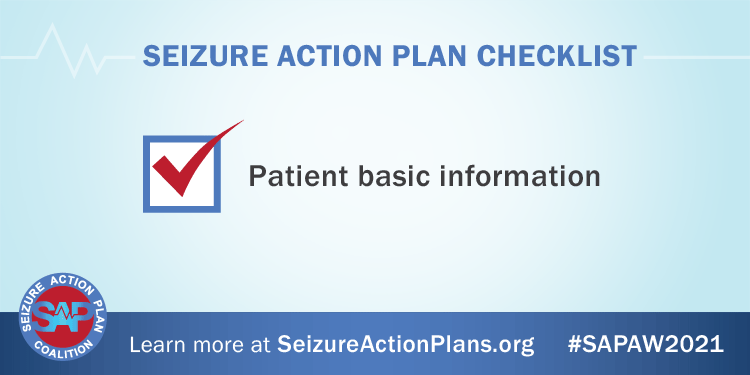This week (Feb. 8 -14) is the inaugural Seizure Action Plan Awareness Week, which is held annually starting on the second Monday in February in acknowledgement of International Epilepsy Awareness Day.
We spoke with Tracy Dixon-Salazar, PhD, Executive Director, LGS Foundation, about the importance of seizure action plans, creating your own plan and how to help raise awareness. Tracy is a neuroscientist, geneticist, patient advocate and mother of a child with severe epilepsy who has benefited immensely from having a Seizure Action Plan.
What is a Seizure Action Plan? And why do I need one?
A Seizure Action Plan (SAP) contains tailored guidelines on how to respond during a seizure, based on a person’s medical history. It includes health and medical information specific to the person and helps others recognize seizures and the appropriate steps to take to keep him or her safe from injury or damage caused by prolonged seizures.
A Seizure Action Plan (SAP) is important because seizures can be life-threatening. Having a SAP lets others know what to do in an emergency situation. A SAP can reduce the time to action during a seizure and faster response times can reduce risk of prolonged seizures, the need for emergency rescue medications, and the risk for seizure-associated mortality.
Who should create a plan?
All adults and children with epilepsy need a seizure action plan – especially those with new-onset epilepsy and those with ongoing frequent seizures who had more than one seizure in the previous year. Seizure-free patients who have risk factors for breakthrough seizures may also benefit from a seizure action plan.
A SAP is especially important for those who need help to identify their individual seizure pattern, are unclear on what to do should a seizure emergency occur, live far from medical facilities, have intractable epilepsy syndromes (e.g. Lennox-Gastaut Syndrome, Dravet Syndrome), are at high risk for seizure clusters and/or status epilepticus, or have frequent nocturnal generalized tonic-clonic seizures.


How can I create my own Seizure Action Plan?
Anyone who needs help can visit SeizureActionPlans.org/resources, which offers several online tools to help create an individualized SAP.
Who should I share my plan with?
Seizure Action Plans should be shared with the person with epilepsy, caregivers, healthcare providers, school staff, coworkers, babysitters, and emergency medical personnel when needed.
What inspired creating the first Seizure Action Plan Awareness Week?
The Dravet Syndrome Foundation, LGS Foundation and Tuberous Sclerosis Alliance formed the Seizure Action Plan Coalition and SAP Week to bring a focused spotlight on the need for Seizure Action Plans. Seizure emergencies are very common in the LGS community and having a SAP is crucial to keep our children safe.
How can I participate and help raise awareness about seizure plans?
Please visit SeizureActionPlans.org for a wide variety information. To share posts to help promote this year’s awareness activities, follow us on Facebook.
The Seizure Action Plan (SAP) Coalition was formed in 2020 by the Dravet Syndrome Foundation, the Lennox-Gastaut Syndrome Foundation, and the Tuberous Sclerosis Alliance.
More resources:
- Seizure Action Plans website for more information, stories, downloadable plans, and an awareness tool kit for Seizure Action Plan Awareness Week.
- Seizure Tracker app to track seizures in a diary and create a Dynamic Seizure Action Plan.
- Child Neurology Foundation’s downloadable resources in both English and Spanish, including seizure action plans specific for students.

